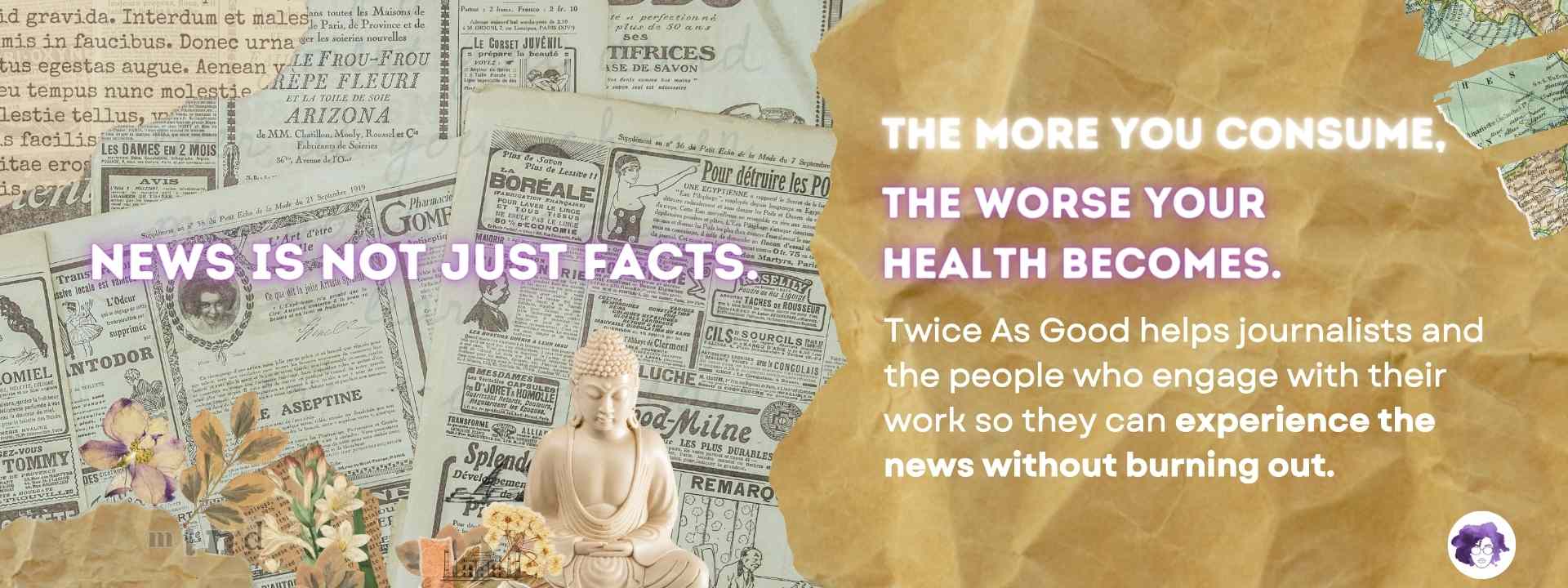
Twice As Good got an updated visual identity and the existing newsletter is getting a new name. Free content continues, while 2XG members will get exclusive monthly posts, and Wise Adviser members can support a fund designated for journalists.
I’m thrilled to share some exciting changes with you. We’ve been honoured with a $5,000 grant from Tribe Network, the BIPOC innovators hub which allowed us to work with a consultant on a major website update and new look.
Originally conceived to address the lack of representation in news media, the newsletter has evolved into a platform promoting mindful journalism for Black audiences. Recognizing a shared interest in consuming media more mindfully, Twice As Good is dedicated to showcasing the transformative potential of mindful journalism.
As part of that commitment, we're renaming the existing newsletter and expanding our offerings.
While the free newsletter will continue, we're also introducing new content exclusive to members. You have the option to become a 2XG member and enjoy special monthly content, or take your support to the next level and become a Wise Adviser, contributing toward a donation fund for journalists.
I’ll tell you about the new look, membership options and exclusive content, and share a clip from Conversations, the new members-only newsletter and podcast featuring Brian Daly, a Black journalism instructor with nearly 30 years of experience the field.
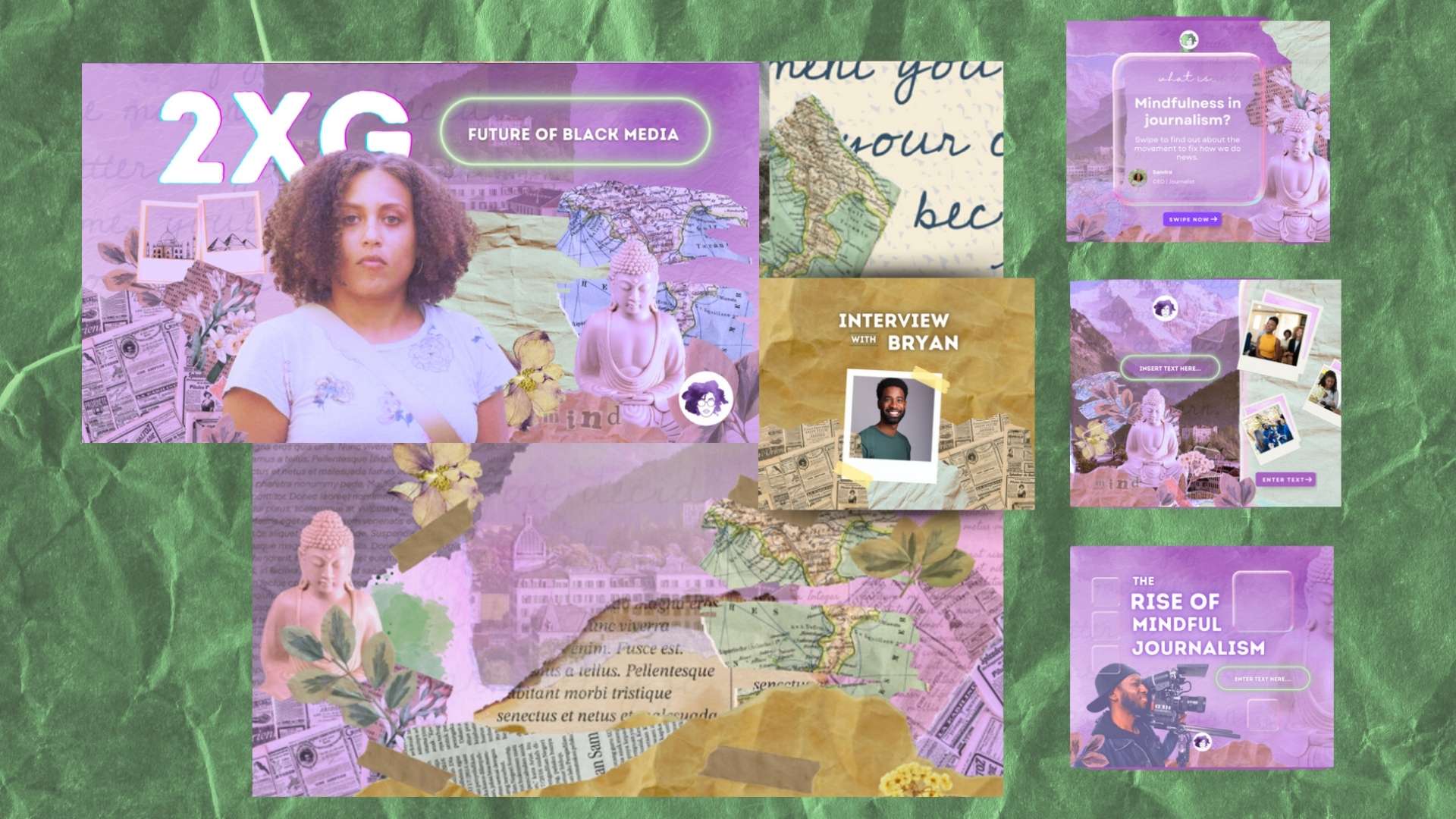
Twice As Good was awarded a $5,000 grant from Tribe Network, the BIPOC innovators hub.
With that funding we were able to work with Mariah International Business and Vitality, led by a cutting-edge brand architect who helped shape the visual personality of the company.
When we talked about the possibilities, I may have immediately become the worst client ever for this clear-as-mud request: “I want it to be like the past, to signify slowing down, but also like the future, because we don’t want to repeat the mistakes of the past.”
Mariah cast some powerful creative magic on that request and turned it into a visual brand that was practically plucked right out of my brain.
The natural tones, scrapbook cut outs, crumpled pages and historical symbols together with hints of mindfulness are visual suggestions to slow down and reflect on the past (and present). I wanted to stay away from idealizing some kind of golden past that was supposedly better, and instead invoke a universal message similar to the Ghanaian concept of sankofa, going back and retrieving lessons from the past.
The distinctive purple-green palette with glowing square bubbles and other shapes symbolize looking toward the future. I hope these visual elements inspire an atmosphere of calm, curiosity, and reflection when you engage with our work.
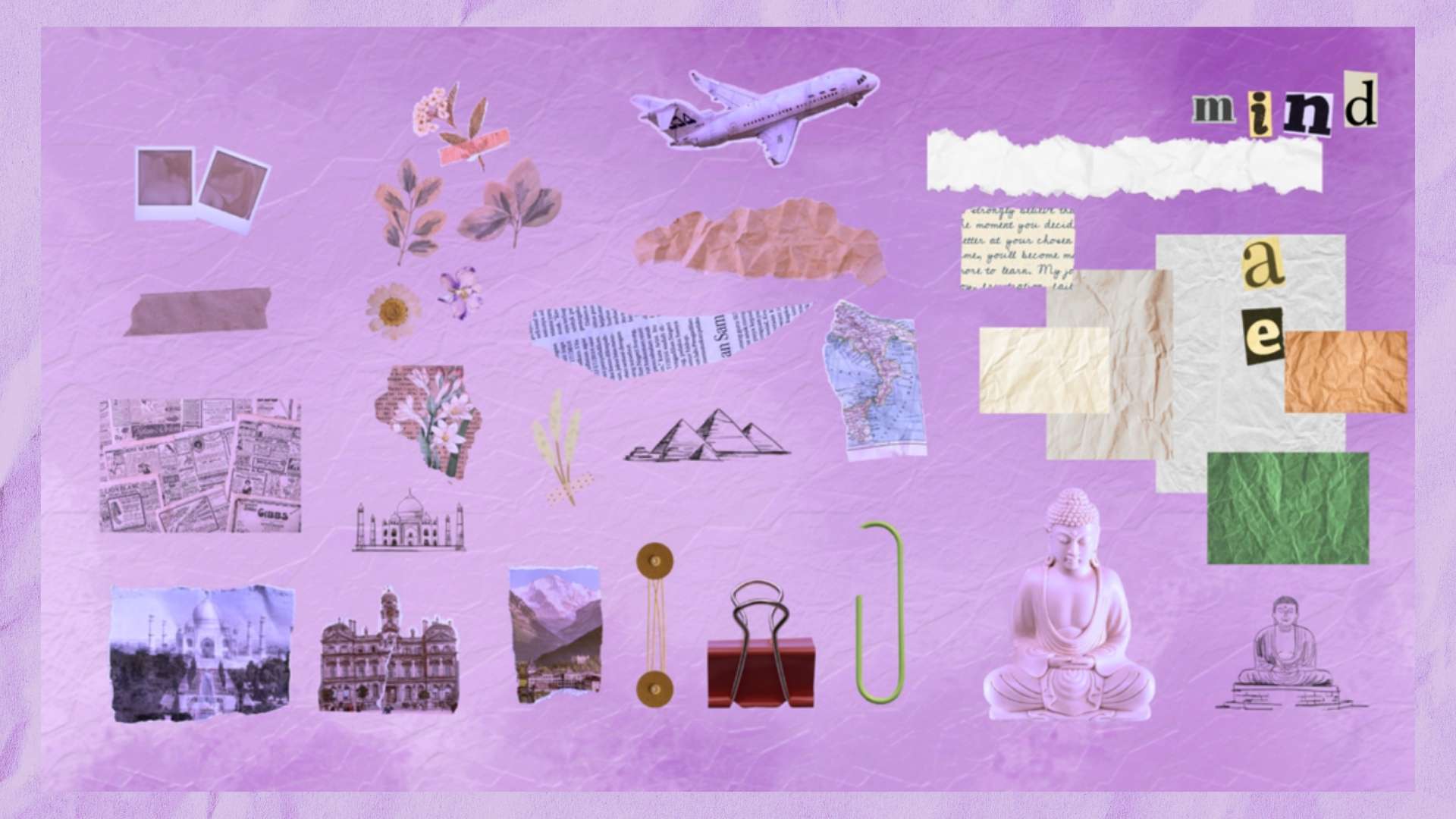
The newsletter you’ve been subscribed to all along will continue, but it’ll be called Mindful Black Journalism from now on.
Twice As Good was originally about creating a Black journalism platform to address the lack of representation in news media. That further developed into a focus on mindful journalism, especially in service of Black audiences. But I soon realized that I couldn’t focus on mindful Black journalism without explaining and demonstrating what mindful journalism is in the first place.
In my discussions with other journalists over the last year, as I introduced them to the concept it seemed that everyone was interested in creating and consuming media more mindfully, they just didn’t know how.
I sought advice from Black peers, community leaders, elders and professionals, then I presented stories aimed at a Black audience in a way that I hope is interesting for anyone who might come across it. My energy has been focused on showing you what mindful journalism is, and how it can serve Black culture.
1) produce mindful journalism by and for Black folk
2) help fix journalism by supporting journalists with mindful practices and approaches to news media
So we’re clear about what we’re doing with the newsletter, and in the same spirit of clarity we’re going to start calling it a podcast as well, because it is audio after all, and I don’t want that value to be lost on anyone who might want to listen. You won’t find this podcast on any other platform, only by subscribing or visiting the website.
All free subscribers will continue to get the Mindful Black Journalism newsletter and podcast in their inbox as usual.
Which brings me to the next big change: we’re expanding to offer more podcast content for those who care to support mindful Black journalism by becoming a paying member!
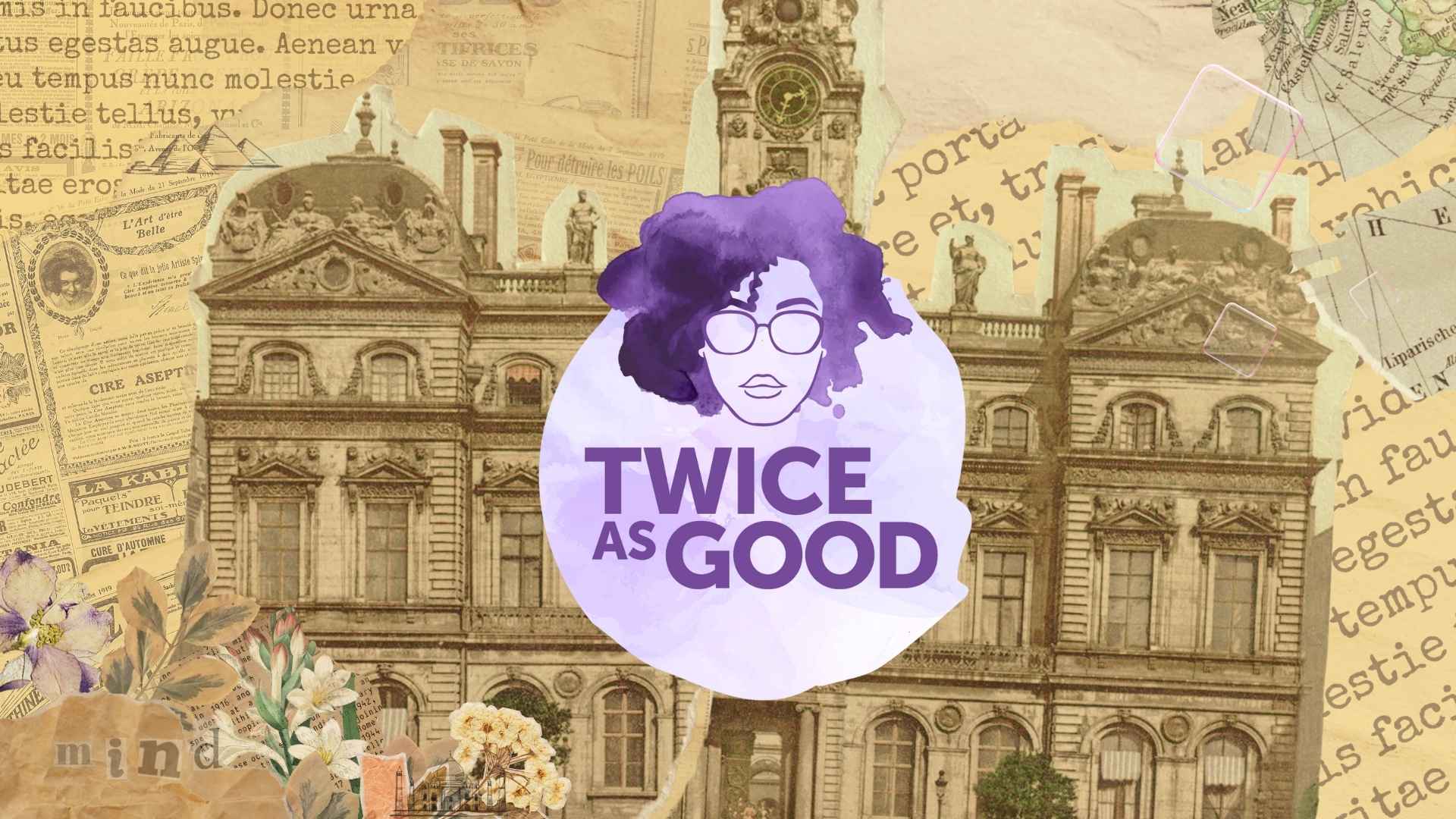
I hope I’ve made it crystal clear that you do not have to become a member to keep enjoying mindful narratives on Black life in both text and audio. But if you do want to support the movement to fix journalism you can join a community of likeminded people, and get access to exclusive content.
Members will get one extra post each month featuring a conversation with a journalist, scholar or meditation practitioner, to help you stay tuned without burning out. You can listen to it as if it’s a podcast episode, or you can read through the highlights.
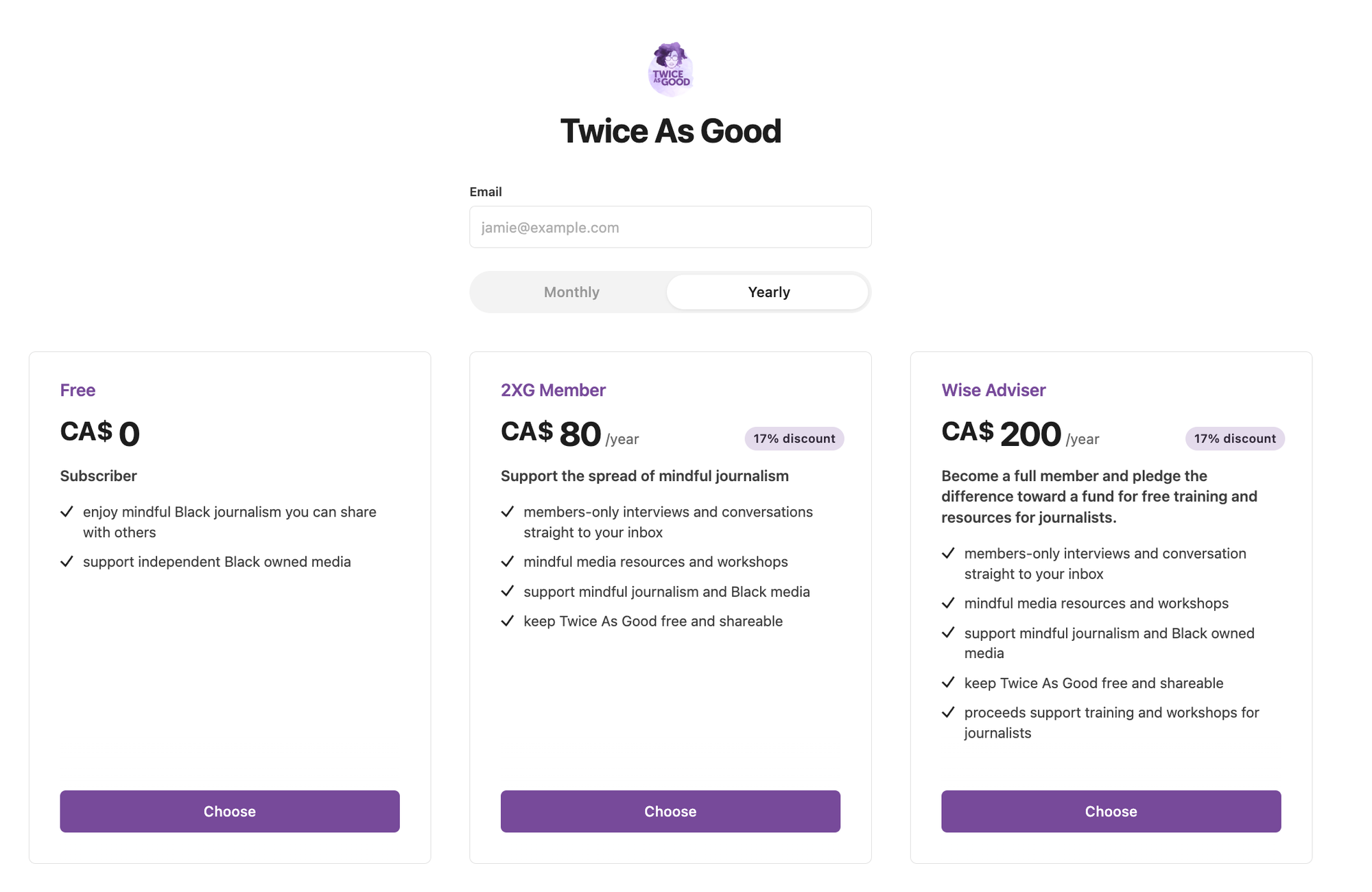
When you sign up you will be given three options:
This fund goes toward developing programs on mindful journalism methods for current and aspiring media workers, and free workshops specifically designed to help Black journalists thrive. It could turn into a course on trauma-informed reporting, or a Black self-care workshop, for example.
As a member you’ll also start to see invitations to virtual events where we can connect with each other, and learn practices that aim to fix journalism and heal our relationship with news media.
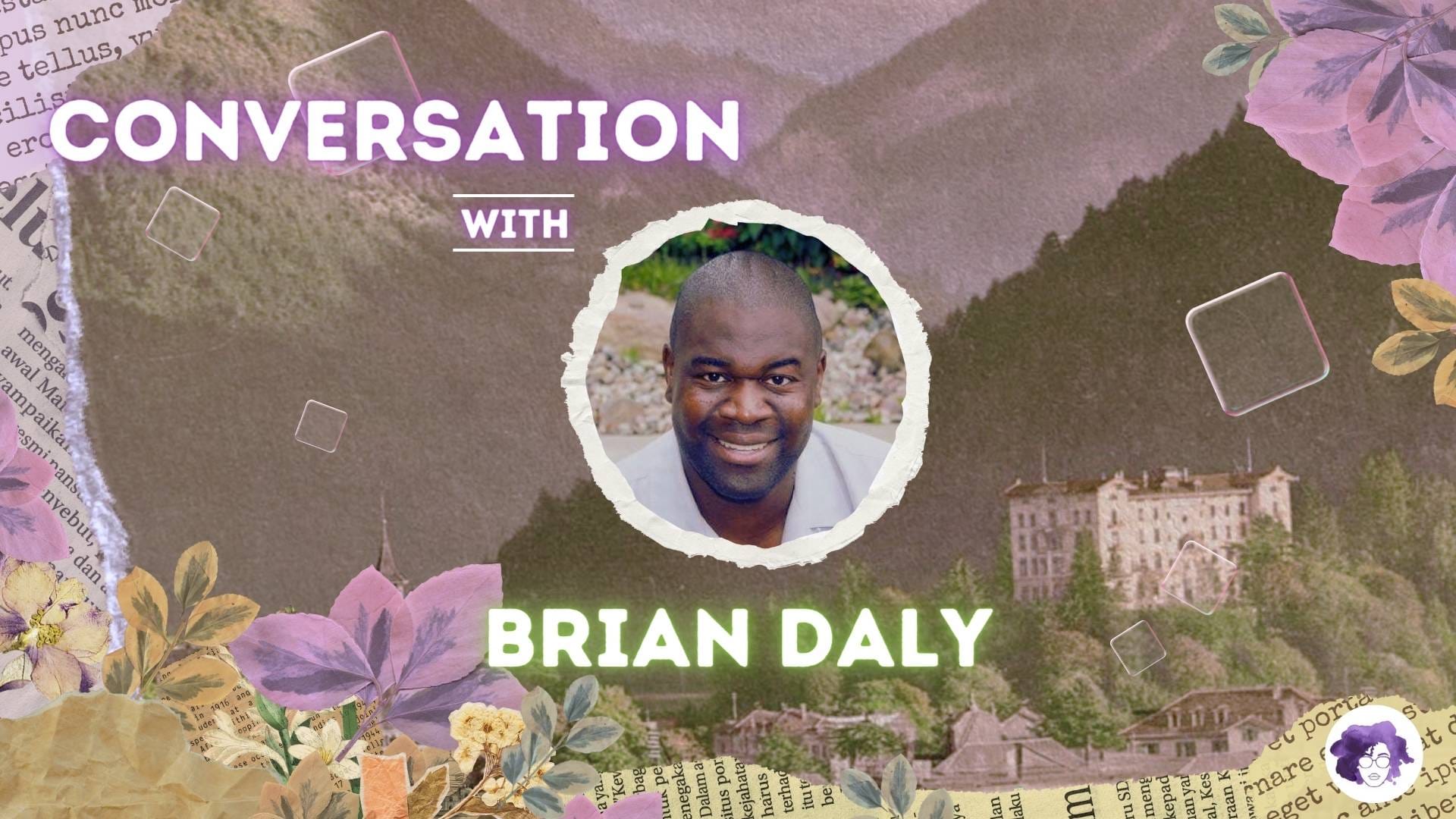
Members who sign up now will get the first Conversations episode in their inbox later this month, featuring King’s College journalism instructor, Brian Daly.
Brian has worked almost 30 years in print and television journalism, and he’s an assistant professor at King’s college.
He’s also the former director of the Canadian Association of Black Journalists where he oversaw J-School Noire, a journalism camp for Black high school students.
We talk about the power of Black communities to create change in media despite everything; shedding light on what we can do, and what we have been doing to address the issue of newsroom diversity and representation.
Here’s a preview:
"I've even seen journalists-white journalists-engage in activism through their journalism in a big media company, and just do one sided stories. And they're just pushed all the way through to the public. Sometimes they won't put a Black reporter on a Black story because they think they're biased and might engage in activism, but they're assuming that before they even do it. So the Black reporter doesn't even get put on certain stories, or the Indigenous reporter doesn't even get put on the Indigenous story because it's assumed that, 'oh, how could an Indigenous reporter cover an Indigenous story?' [while at the same time] you're encouraging on the issues that are important to the white community, you're encouraging some of the white journalists to go and do their activism and use this huge, powerful system to push that on people. I've seen it with my own eyes, Sandra."
Thanks for being here.
